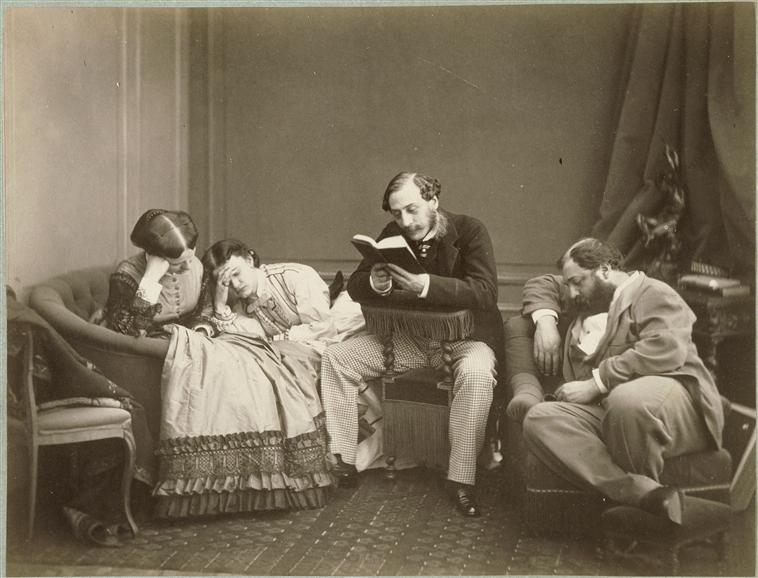10 writing tips on how to not be boring
 Business writers are boring. It’s tedious to read their email, Web sites, and white papers. Standing out from this grey background just takes a little color, and it will boost, not harm, your professional reputation.
Business writers are boring. It’s tedious to read their email, Web sites, and white papers. Standing out from this grey background just takes a little color, and it will boost, not harm, your professional reputation.
Boring text is not only dull to read, it’s dreary to write. Your readers are seeking information, but you’ve still got a responsibility to capture their attention. I’ve assembled ten simple tricks can perk up your writing and help make your message memorable. There’s a summary chart at the bottom of the post.
Hovering above my suggestions is one meta-trick: variety.
Don’t overuse any of these suggestions. It’s far better to mix them up than to repeat them.
Use these techniques once or twice in a document or email and you’ll keep readers interested. Use the same one repeatedly and it becomes a tic, about as delightful as a toddler who tells the same knock-knock joke 27 times.
Choose words that stand out.
In this post I used the word “dreary,” an unusual word in a business context. I called Jeff Bezos’ email a “non-denial denial.” In my post on writing shorter, I suggested that you “organize relentlessly.” These are words, or combinations of words, that you don’t typically see in business communication. The key is to choose words that clearly evoke your meaning without drawing undue attention to themselves.
Add vivid similes and metaphors.
Metaphors evoke pictures in people’s minds (remember the toddler telling knock-knock jokes?). They work, but you need a comparison that falls between cliche (“dry as dust”) and bizarre (“dry as your mouth when you wake up with a massive hangover”). If you’re describing writing, “dry as the fine print in an insurance policy” might do it. I likened throwing popups at new site visitors to french-kissing somebody you just met. Give ’em the right metaphor and they’ll never forget what you said.
Vary sentence and paragraph length
The easiest way to liven up your writing is the one technique people ignore most.
If your paragraphs and sentences all look the same, the writing appears intimidating. Wake people up with a one sentence paragraph like “This could be the biggest mistake we ever made.” Or throw in a short sentence like “This could backfire.” Real conversations are interesting because they feature give and take, not just a series of soliloquies. The occasional short sentences or paragraphs creates a feeling of dialogue.
Start boldly.
Write what you mean in the first 50 words. Your readers will take notice.
Add humans.
Most business writing lacks people. So humanize it. “Imagine Ellen, our customer, has just caught a terrible cold. Unable to sleep, she drags through the day. Then she encounters our Web site . . .” Whether you’re talking about customers, employees, or influencers, turn them into real people. While anecdotes can’t replace data, they can make it far easier to relate to.
Use humor and sarcasm.
Trying to drive a point home? Use humor to explain how absurd the opposite point of view is, or draw people’s attention to the ironies of a situation. It doesn’t hurt your case if the readers break into a knowing smile or a chuckle.
This one comes with a bunch of caveats: Make fun of situations, not people. Don’t be mean. Don’t be obscure, because your audience won’t get the joke. Use puns extremely sparingly. Don’t tell actual jokes. And if you’re just not funny, use one of the other nine tips here instead.
Talk directly to the reader.
Use “you,” “we,” and “I” to make it clear that yes, you are talking to the reader. Provide clear recommendations and describe who should take them. People are more attentive when you’re talking directly to them about their issues.
Be informal but not sloppy.
Much of business writing is informal (like that email to your coworkers). Even formal writing like white papers need not be starchy. The right tone is “business casual.” That means you can include phrases like “Look, we have a problem here,” and “Can we agree on one thing?” To maintain a professional demeanor, though, stop short of using emoticons, exclamation points, texting slang (EZ 4 U 2 say), and profanity (unless you’re quoting this blog).
Cut the crap.
Jargon, passive voice, long sentences, and equivocation wear out your welcome. They’re like a tax on the reader’s attention. Cut them and the rest of the writing will stand out.
Use lists and graphics.
They break up the text and make it easier to digest.
—
Photo: Olympe Aguado via Wikimedia Commons

What are your thoughts on the power dynamics of using 1st person pronouns in writing? The first thing that came to mind when reading this post was an NPR story from last fall.
After hearing the story, I was more (self)conscious about using the word “I” in my business correspondence.
http://www.npr.org/sections/health-shots/2014/09/01/344043763/our-use-of-little-words-can-uh-reveal-hidden-interests
Interesting article. Using “I” in every other sentence makes you look like a neophyte. But not using it at all hides your intentions. I recommend using it just a few times, where it makes sense.
SEO gurus, Marketing ninjas are some of the words that no longer stands out on the business context. It’s definitely getting boring reading those phrases in a LinkedIn profile. Instead, mix it up with your own sense of creativity, like Traffic Controller, or Hooker(not the sleazy kind), that hooks your audiences by the collar.
Hi There, bit cheeky but I would love to use the photo of a victorian drawing room setting with the guy reading. I teach powerpoint and this would be perfect to use as a metaphor for boring?
Many thanks
Here’s the photo credit: Photo: Olympe Aguado via Wikimedia Commons.
https://upload.wikimedia.org/wikipedia/commons/2/24/Aguado_La_lecture.jpg